Welcome Ready, Aim, Build Attendees!
Below you will find questions received during our March workshop, and responses provided by members of the Cultural Planning Collective. Please don’t hesitate to click on the “Follow-Up” links below the questions to continue the dialog with our team.
We recognize a lot has changed in the world since you asked these questions, so please also feel free to submit new questions that may be more relevant to your current challenges by chris.wood [at] smithgroup.com (emailing Chris)title="E-mail chris.wood [at] smithgroup.com". He’ll be sure to direct your inquiry to the right experts to return a helpful response.
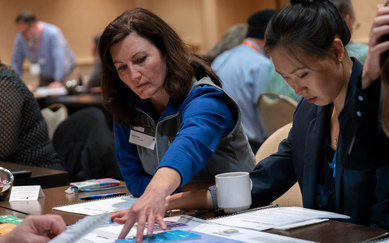
1. In-Kind Support: How do you suggest working with in-kind support? Any pitfalls to watch for?
Response: In-kind support can be a blessing and a curse—nobody wants to turn away free stuff! But it is imperative to discuss the types of in-kind support you are receiving with the entire team. In exhibits, this can include AV systems and media screens, fabrication, audio systems, and related equipment that will have a direct tie to the design and the design team’s ability to consistently manage the quality and consistency of controls and integration across the complete experience. Outside of exhibits, in-kind donations in the architecture do occasionally happen as well. At the National Museum of African-American Museum History and Culture the escalators and other materials were gifted in kind. It required a fair evaluation and many documents to convey and install. Any time equipment, systems, or materials need to be integrated into a design because they have been gifted, a thoughtful consideration of design impact, systems warranties, compatibility with other components, and subjective aesthetic concerns must be weighed to determine if the particular gift is “worth it.” In cases where the in-kind support is a service, such as legal counsel, your evaluation may have less impact on the design. However, you should still consider how the typical expectations you would have for a paid consultant providing these services would be handled when those services are being donated? Are you going to be able to properly hold someone accountable for this service, enforce deadlines, or feel comfortable terminating the service for underperformance if the need arises? Sometimes charity can create a conflict of interest, or at the minimum a great deal of awkwardness, when challenges arise.
Follow up with mgutierrez [at] choracreative.com (Maria Elena)title="E-mail mgutierrez [at] choracreative.com" from Chora Creative, jared.oldroyd [at] clarkconstruction.com (Jared)title="E-mail jared.oldroyd [at] clarkconstruction.com" from Clark Construction, and gcoss [at] gallagherdesign.com (Gretchen)title="E-mail gcoss [at] gallagherdesign.com" from Gallagher
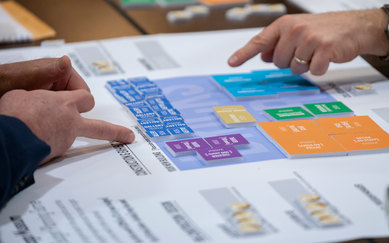
2. Can you share the PPT presentation with the attendees? The content was amazing and hard to capture in photos or notes.
Response: Thank you! We certainly sympathize with the challenge of taking this all in. Given the sheer scale of this presentation (300+ slides) representing content from several collaborators and certain proprietary information, we’re not able to share the full show. However, we would be happy to distill particular sections or topics into PDFs for your internal reference. We’re also happy to come to you for a more focused version of this presentation in a format that suits your needs. Please don’t hesitate to reach out if either of these options works for you. And thank you again!
chris.wood [at] smithgroup.com (Follow up with Chris from SmithGroup)title="E-mail chris.wood [at] smithgroup.com"

3. Naming Rights: During a capital campaign, how long do you name an exhibit? What about a gallery?
Response: This is a judgement call on a case-by-case basis that considers a donor's past history with the institution and expectations. Best practices limit the duration of naming rights in order to give an institution the latitude to raise funds toward future renovations of galleries or to overhaul exhibitions. Capital campaign donors that support museum renovations or expansions conditioned on naming galleries after their families should be given a right of first refusal to maintain their name in such (or similarly sized) spaces if the museum is renovated again in the future. The gift agreement can state precisely this point, perhaps adding a time limit to this prerogative. Corporations that name exhibitions or museum spaces are used to naming-rights agreements with a time limit. Local market conditions should offer a benchmark for the cost and the duration of a naming opportunity. For example, if a corporation has obtained the right to name for ten years a local sports arena with a donation of $10 million, then the museum should take this into consideration when planning its capital campaign offers. Permanent naming of buildings and exhibits does still exist for many institutions; however, these gifts are at the highest range of giving. It does not necessarily preclude later naming right for a renovation; however, an institution will typically address the original donors on a wall within the renovated space. This too should be considered in the gift agreement.
Follow up with gcoss [at] gallagherdesign.com (Gretchen) for Gallagher and mgutierrez [at] choracreative.com (Maria Elena) from Chora

4. Which Plans Do We Need: What if we don't have every one of the plans in your menu? Which are the most important and to whom?
Response: Don’t worry—every institution is different. Not every project requires every plan in the menu. More importantly, not every capital project demands year-long intensive planning exercises with huge teams of consultants. Generally speaking, the larger the institution or anticipated scale of the capital project, the more robust the planning exercises should be to accommodate the increased complexity, risk, and potential impact of that scale increase. What is most important, regardless of scale, is having an appropriate and informed understanding of your current state, your mission, your purpose, whether you should build—and if so, what you should build (program and scale aligned with purpose and capacity), how best to deliver it, and how to operate and sustain it. There are many different ways to answer those questions in a scale and depth that works for you. Whatever work you have completed to-date has value. Use that work, along with wisdom from the diverse skill-sets you have in-house, to decide where the gaps are in your roadmap for the project.
Follow up with chris.wood [at] smithgroup.com (Chris) from SmithGroup, gcoss [at] gallagherdesign.com (Gretchen) from Gallagher, and mgutierrez [at] choracreative.com (Maria Elena) from Chora

5. Economic Impact Studies: Do you have longitudinal studies that demonstrate educational and economic impacts museums have on local communities?
Response: The American Alliance for Museums, Americans for the Arts, and SMU’s National Center for Arts Research have conducted studies on the social impact of museums. Their websites have references to these and other academic work on the subject. Longitudinal studies are rare because of the difficulty to obtain data sets that are consistent through time and in cross-section. Chora is working on an industry-wide longitudinal study of the operational and financial impact of museum expansions. Once this study is wrapped up, it will be made publicly available.
mgutierrez [at] choracreative.com (Follow up with Maria Elena from Chora)
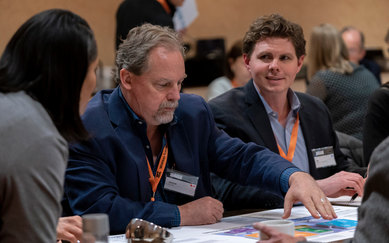
6. Donor Wall: How long do we keep/maintain a donor wall (after the campaign)?
Response: Typically, donor walls are maintained until their host space is renovated, but probably no less than a decade. As with other donor naming opportunities, the minimum duration of the installation should be spelled out in the gift agreement and may be influenced by market norms, donor expectations, or your long-term plan for the space.
mgutierrez [at] choracreative.com (Follow up with Maria Elena from Chora)

7. Revitalizing Content: We have a museum in a government agency that has been active for 20 years. We are trying to revitalize our constituents and donors. We would love to have ideas, thoughts, and suggestions on how to do this.
Response: One of the most critical things would be to begin with coalescing your internal teams and stakeholders, solidifying the decision-making process and the key messages you would like to convey. The design team will benefit from a clear understanding of your current likes and dislikes related to the work you have completed over the years. In short, this is a great opportunity for stakeholder engagement. Constituents and donors that see themselves and their ideas reflected in the end product are more likely to support implantation and work to sustain the mission.
Follow up with gcoss [at] gallagherdesign.com (Gretchen) for Gallagher and mgutierrez [at] choracreative.com (Maria Elena) from Chora
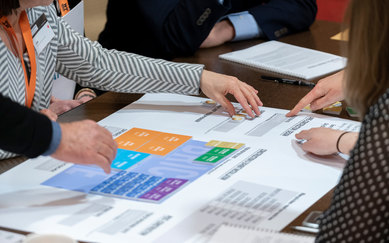
8. Design-Build for Museums: It was touched upon, but can you outline your recommendation for appropriate project delivery methods for an art museum project? Our project is slated for a design-build delivery as it is part of the UC system. Progressive Design Build has been mentioned as a possible compromise. Do you know of any iconic or award-winning museums that were delivered via design-build? Thoughts about risks?
Response: In our experience, we have found that the CM at Risk model is the most appropriate delivery method for large, complicated museum projects. This engagement allows early Contractor and Subcontractor involvement while allowing the Owner to maintain a high level of control over the design of the project.
We are not aware of any iconic or award-winning museums that have been delivered via design-build. While design/build has been used very successfully on other complicated project types, these projects typically have a clear set of bridging documents and program requirements. The large number of stakeholders in a typical museum project could cause challenges in creating these documents.
Follow up with jared.oldroyd [at] clarkconstruction.com (Jared) from Clark and chris.wood [at] smithgroup.com (Chris) from SmithGroup

9. Financial Plan Timing: When should we do the financial plan? During readiness/strategic planning, or after the master plan?
Response: We recommend a conceptual financial plan during the readiness/strategic planning phase to model: (1) conceptual project cost estimates, given a specific architectural program; and (2) the post-construction impact on operating expenses. While the plan is conceptual at this early phase, robust modeling and sound benchmarking allow you to explore the future before the architects begin master-planning. The charge to the design team is then to master-plan an expansion or renovation within boundaries consistent with financial and operational affordability. These boundaries can only be pinned down with some financial planning at the early readiness phases.
mgutierrez [at] choracreative.com (Follow up with Maria Elena from Chora)

10. Design Before Planning: If you started with the cart before the horse, do you recommend going back to the start or keep moving forward while trying to catch up on planning? We have a building rendering but have not even done a strategic plan.
Response: Building, renovating or adding to a museum is a big deal. For most, it’s a once-in-a-generation opportunity. So, it’s worth taking the time to get it right. That does not mean you need to start over. However, as in the response to question #4 above, taking a brief pause to circle back and answer a few key questions to create a working roadmap that you can have true faith in will serve you well in any design process. Are you building the right program, at the right scale, with the right content, to satisfy your purpose and mission, within your capacity to fundraise and operate sustainably? Redesigning late in the game when one of those mis-alignments presents itself is a painful and expensive process - and runs the risk of undermining credibility with donors and your community. There are too many sad stories of museums with exciting renderings that never leave the page of the development packet. Honest due diligence is always worth a modest delay.
Follow up with chris.wood [at] smithgroup.com (Chris) from SmithGroup, gcoss [at] gallagherdesign.com (Gretchen) from Gallagher, and mgutierrez [at] choracreative.com (Maria Elena) from Chora
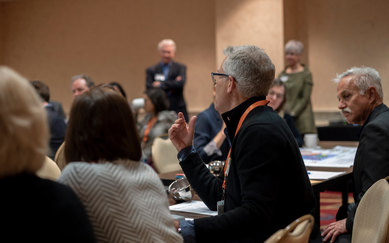
11. Rule of Thumb Cost: What are the actual (average or percentage) costs of a freestanding 100,000sf history museum (post-opening/punchlist) for both architecture and engineering, as well as exhibition and IT?
Response: The range will be very dependent not just on the building but also on the type of museum (artifact-heavy, story-driven, etc), site access and existing site conditions, general design expectations, location, timing of bids, etc. The caveats can be endless. However, looking at hard and soft costs in the following ranges:
+Hard Construction Costs: $500 to $650/sf (applied to full building area)
+Infrastructure: $150/sf (applied to exhibit areas)
+Exhibit Fabrication Costs: $700-900/sf (applied to exhibit areas)
+Project Costs (AE fees, exhibits, project contingency, estimating, Project Management): $350/sf
+On a net total project cost basis, the above values might combine to be roughly $1,000 to $1,200/sf.
Follow up with dpomfrett [at] ccorpusa.com (Daniel) from Cumming and jared.oldroyd [at] clarkconstruction.com (Jared) from Clark